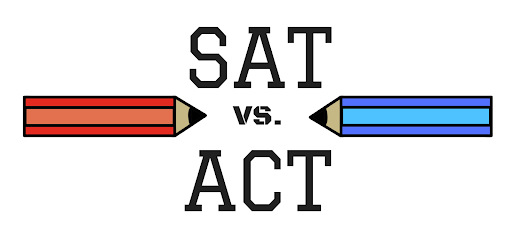Preparation for ACTs or SATs
For 11th and 12th graders, school gets a lot more difficult with more responsibilities and more homework–all for preparation for college. A major aspect of college admissions is the standardized tests: the ACTs and SATs. Some kids take one over the other while some take both. So which one is the best fit for you?
That’s a decision you will have to make on your own. You should research and choose the exam that’s best for you. Here are some differences between the two. The SAT used to stand for “Scholastic Amplitude Test” and the ACT stood for “American College Testing”, but both are more recognized by their abbreviations now. One of the major differences between the two exams is that the SAT primarily assesses reasoning ability, while the ACT puts more emphasis on straightforward knowledge. Of course, there is some crossover in material. Both tests, for example, have a Math section and English section. Both Math sections require a solid foundation in geometry and algebra. The SAT is more likely to include story problems and creative applications of the basic rules of geometry. The ACT, in contrast, tends to be more straightforward. For the English section, the SAT places a greater emphasis on reading comprehension and vocabulary. In fact, the SAT is notoriously known for its focus on vocabulary. Although the ACT includes a reading comprehension section as well, it focuses more on grammar and syntax. Similar to the Math section, the ACT is more a test of knowledge than of reasoning and problem-solving. Finally, the SAT does not contain a science section, while the ACT does. The new SAT, available as of March 2016, will only differ from the old SAT in its new median score (satisfactory score)–now 1000 points, length–3 hours and 50 minutes, format–no longer will omitting be penalized, and platforms–having the option of being administered on a computer. The new SAT will also have slight adaptions in the reading, writing, and math sections. Math will have data and graph interpretation questions, Writing will be more passaged-based centered, and Reading will be “evidence-supported” and data reasoning questions. Both exams still have an optional writing section. Make sure to appeal to your strengths when choosing a test.
After choosing your test, sign up! When signing up, make sure to leave yourself plenty of time to study. It is advised to choose a test date at least 2-3 months away so you have lots of time to study. But how can you study?
There is no set way to study. Everyone has different, successful methods. You should take many practice tests so you know exactly what type of questions you might have to face on test day. You can also get a tutor, sign up for a class, or study individually.
Good luck on your standardized exams!










